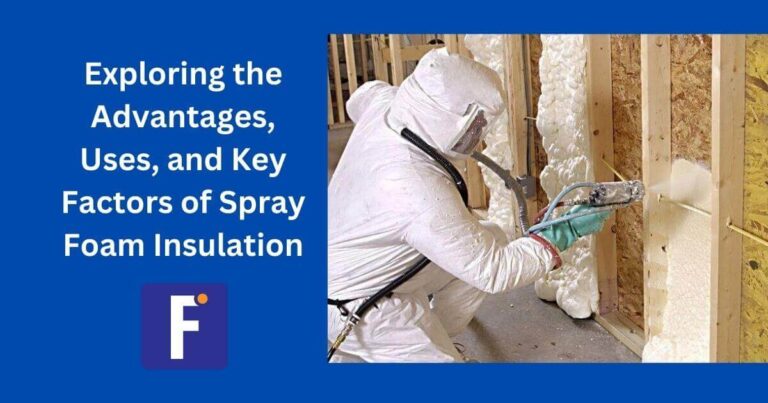It is an innovative solution to traditional insulation methods, has gained significant popularity in recent years due to its advantages. From energy efficiency improvements to increased structural integrity, this modern insulation method transforms how we insulate our homes, commercial establishments, and industrial buildings.
This document delves into the multiple benefits, practical applications, and key considerations surrounding spray foam insulation, offering a comprehensive guide for those interested in exploring this sustainable and efficient insulation option.
Spray foam insulation is a type of insulation material that can spray onto walls, roofs, and other surfaces to create an air-tight seal. It creates mixing two diverse types of chemicals – polyol resin and isocyanate – which react and expand upon contact, creating a dense and durable foam layer.
The result is a highly effective and versatile insulation material that can use in various settings, including attics, walls, crawl spaces, and even under concrete slabs. It is available in two primary forms – open and closed-cell foam – each offering unique benefits for different applications. For more information on spray foam insulation and how to install it, visit this site.
Advantages of Spray Foam Insulation
It offers several advantages over traditional insulation methods, making it a popular choice for modern buildings. Some of the key advantages include:
- It creates an air-tight seal, preventing air leakage and reducing the energy consumption required to maintain a comfortable indoor temperature.
- Due to its dense and durable nature, spray foam insulation can improve the structural integrity of buildings by providing added support and stability.
- The air-tight seal created by spray foam insulation also helps prevent moisture from entering the building, reducing the risk of mold growth and water damage.
- It can function as a sound barrier, reducing noise transmission between rooms or from outdoor sources.
Practical Uses of Spray Foam Insulation
It can be used in various applications, from residential homes to commercial buildings and industrial facilities. Some common uses include:
- It is an excellent option for insulating attics due to its ability to fill gaps and create an air-tight seal in hard-to-reach areas.
- Whether it is new construction or renovation, it can be applied to walls to provide an effective thermal barrier and improve energy efficiency.
- It is often used on roofs as it offers superior protection against moisture and helps increase the lifespan of roofing materials.
- Crawl spaces are prone to air leaks and moisture buildup, making them a perfect candidate for insulation.
Key Factors to Consider
You need to consider a few factors when choosing this type of insulation. These include:
- That requires special equipment and training for proper installation. It is best to hire a professional contractor with experience installing spray foam insulation to ensure the best results.
- It may have a higher upfront cost compared to traditional insulation methods. However, its long-term benefits and energy savings can outweigh this initial investment.
- It is essential to check for compatibility with existing building materials, as some chemicals in the spray foam may cause damage or corrosion.
Maintenance Requirements for Spray Foam Insulation
Another advantage of spray foam insulation is its minimal maintenance requirements. However, some general maintenance practices can help prolong its lifespan and ensure optimal performance, including:
- – Regularly inspecting the insulation for any signs of damage or wear can help identify and address potential issues before they become major problems.
- – Keeping it clean and free of debris can help prevent any potential damage or deterioration.
- – Applying it to fill in any gaps and cracks in the building’s structure can improve its overall effectiveness.
Conclusion
Spray foam insulation offers numerous benefits over traditional insulation methods, making it a popular choice for modern buildings. Its ability to provide an air-tight seal, improve energy efficiency, and increase structural integrity makes it a highly efficient and sustainable option.
However, it is important to consider key factors, such as professional installation and maintenance requirements, when choosing this type of insulation.
